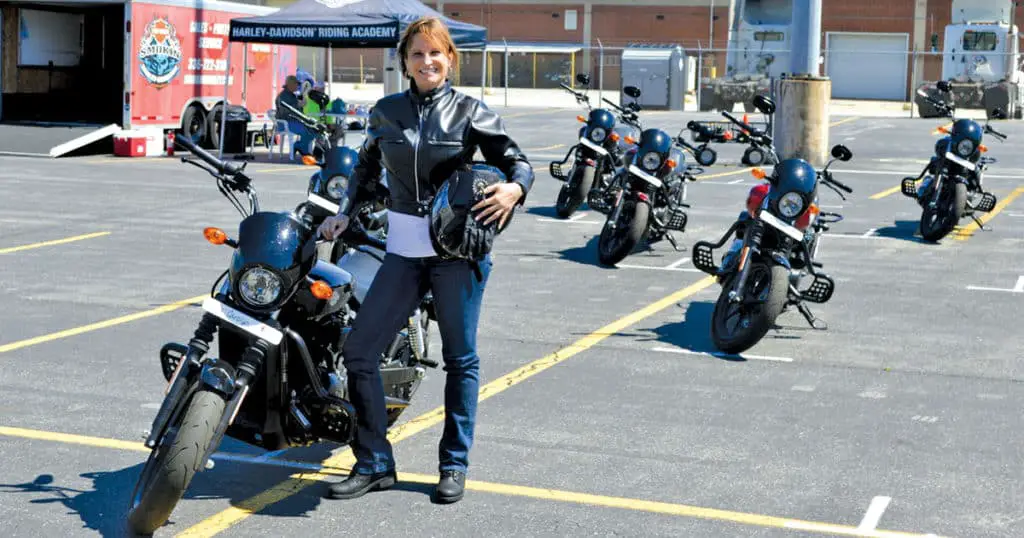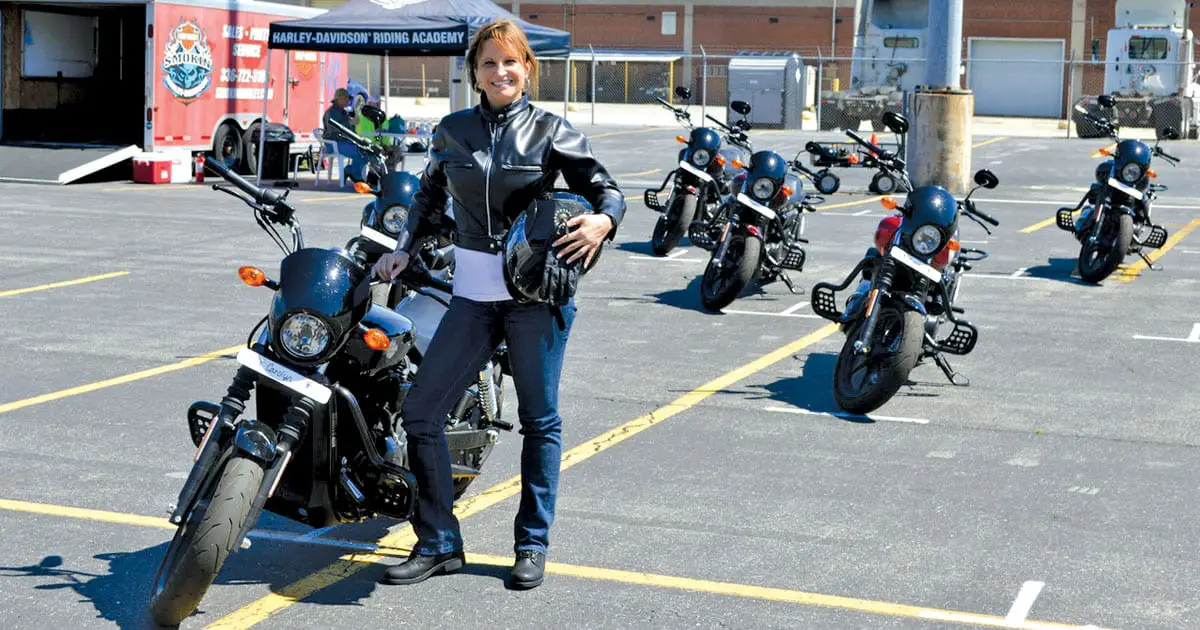Table of Contents

What do motorcycles, imagery, and sports psychology have in common? Something pretty BIG!
Recently, I attended a motorcycle safety course as part of the requirement to obtain a motorcycle license. This class was very intriguing because many of the mental tools that are discussed on this site for athletes and performers were addressed in regards to driving a motorcycle. In particular, the skill of turning a motorcycle requires the driver to look ahead to where the cycle is going rather than straight ahead. For example, if a right turn is approaching then one must look at a point where one wants to go, rather than looking down at the wheel. This means your head must turn in the direction you want to go (right for this example). By turning the head, the driver aligns the body and subtly moves the motorcycle to lean right. If this head movement did not happen, then turning the motorcycle becomes more difficult and it can place the driver in a potentially dangerous position.
*This post may contain affiliate links. As an Amazon Associate we earn from qualifying purchases.
Motorcycles and Sports: Imagery

As it turns out, this lesson in safe motorcycle turning is applicable to imagery in sport. Many sports not only require physical skills but a strong mental game as well. Especially in sports where hundredths of a second or tenths of an inch separate the winners from second-place finishes, an extra edge can be extremely crucial. As a result, athletes are turning towards mental imagery to take their game to the next level. The take-home message is that visual cues align your mind and your body to go in the same direction. For example, Jason Day, who recently won his first major PGA tournament, attributed his win to a key part of his mental game, IMAGERY. For each shot, he first visualized where he wanted his ball to go and then he allowed his body to take it from there. This means he looked to where he wanted the ball to land, rather than clouding his mind with what where he did NOT want his shot to go. This is exactly the same concept as safely turning a motorcycle. Visualize what you WANT to happen!
This skill of imagery is applicable to every sport whether you are a player or a coach. Imagery skills are developed in 3 simple small steps:
Step one: Practicing imagery AWAY from your sport. Time commitment 5-10 minutes
- Set a timer for 5 minutes and get in a comfortable position. Take 3 slow, deep breathes in and out. Close your eyes and begin to imagine your particular sport or skill. Engage as many sense as possible: sight, sound, smells, taste, sensations. Determine if this is a skill you want to develop and build. If yes, move to step two.
- Remember, practice is key to developing any part of your mental game.
Step 2: Begin to use imagery in practice situations. Time commitment 10-20 seconds
- Bring your imagery from step one to practice in your mind. Instead of a 5-minute visualization, it will be 5-10 seconds. If you can do this in your sport, close your eyes and visualize what you want to happen, open your eyes and look at what you want to have happened and then get into action. There is no need to actually close your eyes to make this happen; sometimes, by doing this, it just helps you focus.
- This can be practiced multiple times in practice. Again, the more you practice this skill the greater chance you have of improvement. This skill is the same as building muscle strength-the more you do it the stronger you get.
Step 3: Use imagery in competition. Time commitment 5-10 seconds
- Depending on your sport, you may be able to close your eyes, but if your sport does not allow for that, then visualize what you want to happen and go into action.
Here is an example of how the 3 step imagery practice works for a tennis player working on her serve:
Step 1: She finds a comfortable place away from the tennis court and begins her imagery practice with setting a 5-minute timer and closing her eyes and taking 3 deep breathes, emphasizing the exhale to slow her mind down. Once she feels calm, she visualizes in her mind her serve routine. First looking where she wants the ball to go(in her mind), then she progresses on to her routine. She engages all of her senses: how does the ball feel in her hand, what sounds can she hear, what smells does she experience, what is the temperature, etc.. Once she has completed one serving routine, then she can begin visualizing a second serve. This process continues until her 5-minute timer rings. This practice is continued every day. Once she feels confident with her visualization, she is ready to bring it to practical situations.
Step 2: She is practicing her serves at practice and takes 5-10 seconds to move through her imagery. She takes a deep breath, looks where she wants the ball to go. Engages in her routine and serves the ball. This imagery practice is repeated as many times as possible with awareness and flexibility of mind. She can alter the imagery to achieve different results. Once she has utilized imagery during practice situations, she is ready to bring it to competition.
Step 3: Match time has arrived and she kicks into her mental imagery practice by taking a deep breath, calming her mind down, focusing on WHERE she wants her ball to go and proceeding into her routine. If she is having a good day, then this routine will be simple. If she is having a match where she is struggling with her serve, then she can use this visualization as a way to focus her mind on a productive action. It can be difficult to find focus when performance is lacking, but since she has been practicing it and building her mental skills, then she can turn to it when she really needs it.
Finally, keep a few written notes about your imagery practice. Help develop it even further by recording what seemed to improve your skills. Placing a sticky note on your bathroom mirror with your improvement further enhances the message you want your brain to develop. Then when game time comes, you can apply the imagery on purpose.

